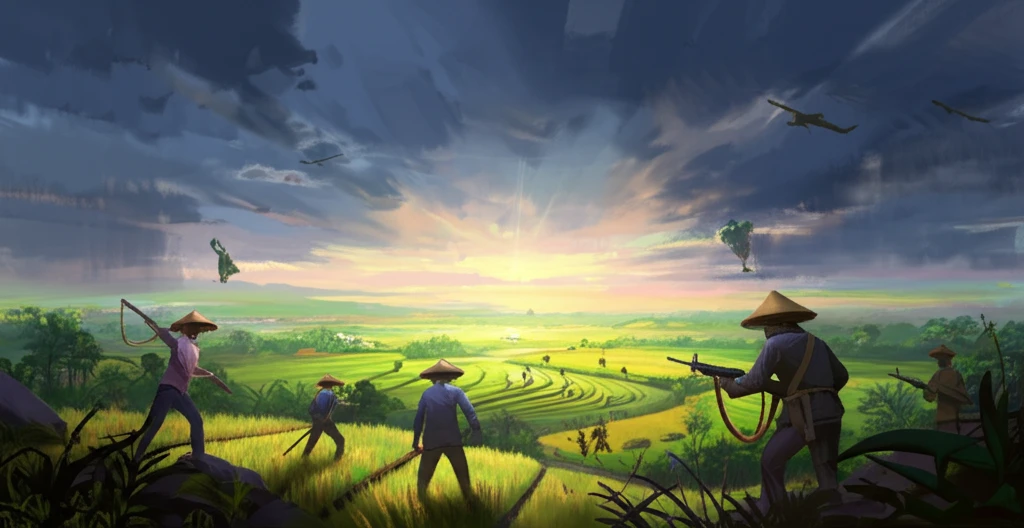
Harvests of Discord: How Agriculture Fuels Social Conflict in Southeast Asia
"Uncover the unexpected link between harvest seasons and social unrest in Southeast Asia's rice-producing regions. Are the roots of conflict buried in the fields?"
In Southeast Asia, the rhythm of the harvest season dictates more than just agricultural output; it influences the delicate balance of social and political stability. A recent study uncovers a compelling relationship between harvest times and outbreaks of political violence and social unrest across the rice-producing croplands of this vibrant region.
Using a comprehensive dataset spanning from 2010 to 2023, which includes over 86,000 incidents across eight Southeast Asian countries, researchers have identified a recurring pattern: a general increase in political violence coupled with a decrease in social unrest during harvest seasons. This discovery challenges conventional understandings of conflict, suggesting that the very activities meant to sustain communities can, under certain conditions, become a catalyst for division.
This article explores the key findings of this research, shedding light on the underlying factors that transform croplands into conflict zones during harvest time. By examining the interplay between agriculture, climate, and socio-political dynamics, we aim to provide a nuanced perspective on the roots of social conflict and offer insights for policymakers seeking to foster peace and stability in Southeast Asia.
Why Does Harvest Time Increase Political Violence?

The study reveals a troubling paradox: harvest seasons, traditionally seen as times of abundance, often correlate with increased political violence, particularly against civilians. The data indicates an approximate 9% surge in violent incidents targeting civilians in areas with significant rice production during harvest periods, compared to other times of the year. This spike is most evident in rural areas dependent on rain-fed agriculture.
- Rapacity: The lure of harvest spoils can incentivize organized groups to seize or destroy agricultural outputs.
- Resentment: Harvest times can exacerbate existing inequalities, creating tensions between those who benefit from the agricultural surplus and those who do not.
- Strategic Advantage: Armed groups may intensify activities during harvest seasons to weaken the state by disrupting revenue collection or intimidating farmers.
Implications for Peace and Stability
Understanding the agricultural roots of social conflict is crucial for developing effective strategies for peace and stability in Southeast Asia. By recognizing the seasonal patterns of violence and the underlying factors that drive them, policymakers can implement targeted interventions to mitigate conflict risks and promote sustainable development. These could include measures to protect farmers and agricultural assets during harvest seasons, address inequalities in access to resources, and promote climate-resilient agricultural practices. Ultimately, fostering peace in Southeast Asia requires a holistic approach that addresses the complex interplay between agriculture, climate, and socio-political dynamics.
